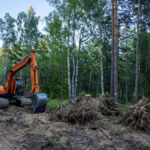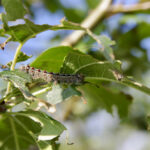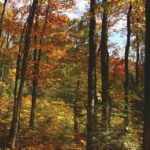Tag Archives trees

Hedgerows enjoy potential new growth in Ontario
Living fence lines offer a plethora of biodiversity and ecological positives

How mixing farms with forests can help nations reach net zero
Planting trees on working farms can curb emissions, boost income but money and time are barriers

Reviving the forest — with agriculture as part of the mix
Silvopasture can provide forage for grazing animals, while managing and building woodlots

Farmers push back against Chatham clear-cut bylaw
Municipality says council intended to prevent aggressive cutting as wider environmental policy changes are discussed

Tree planting emerges from COVID into hot, dry spring
Additional threat of gypsy moth has foresters on edge as tree planting booms

Two forest stewardship organizations to merge
OWA and EOMF already share Kemptville headquarters

Density, not diversity key to northern forest carbon sequestration
Science Notes: Forests can play a crucial role in mitigating climate change

Resistant trees found to resist ash borer
Science Notes: Gene editing could place resistance genes into ash species currently affected by EAB
